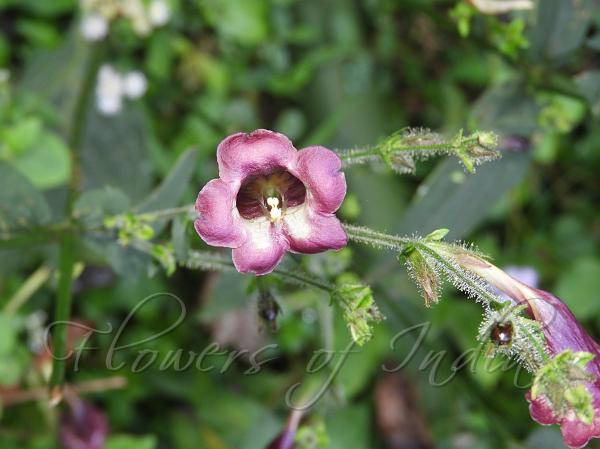|
| Masters Coneflower |
|

|

| File size | 576266 |
| Original date | 11/23/19 10:32 AM |
| Resolution | 5184 x 3888 |
| Flash | Flash fired, auto, red-eye reduction |
| Focal length | 17.0mm |
| Exposure time | 1/60s |
| Aperture | 5.3 |
| Focus Distance | |
| Metering Mode | Multi-segment |
| Camera make | NIKON |
| Camera model | COOLPIX B700 |
| Sensor type |
|
|
|
|
Photo: |
Botanical name: Strobilanthes mastersii Family: Acanthaceae (Acanthus family)
Synonyms: Strobilanthes aborensis, Goldfussia scoriarum, Strobilanthes scoriarum
Synonyms: Strobilanthes aborensis, Goldfussia scoriarum, Strobilanthes scoriarum
Masters Coneflower is a herb 1-1.5 m tall, with stems
4-angled, erect, grooved, hairless to gland-tipped hairy. It is named
for John William Masters, 19th century gardener who worked at the
Botanical Garden in Calcutta. Leaf-stalks are 0-2 cm with upper leaves
stalkless, nearly hairless. Leaf blade is ovate to ovate-lanceshaped,
10-15 x 4-7 cm, hairless, secondary veins 5-10 on each side of midvein,
base broadly wedge-shaped on basal leaves and rounded on upper leaves,
margin sawtoothed, tip tapering. Flowers are borne at branch-ends, in
panicles of spikes, narrowly ovoid, up to 30 cm; flower-cluster-stalk
and axis hairless when young, densely gland-tipped hairy at maturity;
sterile bracts leaflike, lanceshaped to ovate, 5-15 × 3-8 mm, tardily
falling off, tip tapering. floral bracts are elliptic, 5-6 x 2-3 mm,
falling off, tip blunt; bracteoles oblong, about 3 × 1 mm, falling off,
below hairless. Flowers are arranged in opposite pairs or solitary
through abortion. Calyx 0.8-1.2 cm, 5-lobed almost to base; sepals
lanceshaped, with 3 sepals slightly longer than other 2, tip tapering.
Flowers are purple, 2.5-3 cm, straight, swollen, outside hairless,
inside hairless except for trichomes retaining style; tube basally
cylindric and about 2 mm wide for 1-1.3 cm then widened to about 1 cm
at mouth; lobes are round, about 5 mm in diam. Stamens are 4, not
protruding out. Style is about 2.1 cm, slender, sparsely hairy on basal
part. Capsules are club-shaped, about 1.5 cm. In Arunachal Pradesh,
dried leaves are used as tobacco. Masters Coneflower is found in
forests on mountain slopes, uptill altitudes of 1500 m, from Arunachal
Pradesh to Yunnan, China. Flowering: September-January.
| Identification credit: Tabish | Photographed in Pasighat, Arunachal Pradesh |
• Is this flower misidentified? If yes,